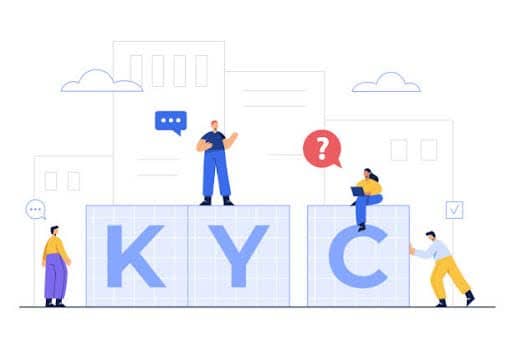Online KYC – A Customer-Centric Approach to Enhance User Experience
The ideas behind Online KYC (Know Your Customer) extend back to the early 1990s when the global financial sector experimented with alternative approaches to identity verification.
As the ease of conducting business and technology advanced, fraud increased, prompting the banking sector to want a more conclusive identity verification solution from governments.
Numerous governments responded to the demand and started enacting laws, but problems persisted with the absence of efficient ID validation technologies and the increasing friction in the client onboarding process.
Chapters
Significance of Online KYC

Business to Business (B2B), e-commerce, and other sectors were not considered when KYC verification started. The banking sector was the primary focus of online KYC compliance; fortunately for regulators, however, the developers of KYC allowed for future expansion and modification. AML compliance also includes KYC as the emphasis switched to anti-money laundering (AML). With this, the need for KYC verification was reinforced, but its significance and client awareness were diminished, and the problems with friction and digital identity management were not resolved.
Online KYC Compliance: What Is It?
Initially, KYC regulations simply obliged financial services (banks, brokerage houses, insurance firms, mortgage houses, etc.) to confirm an individual’s identification, do due diligence, and consider any potential risks associated with doing business with them.
KYC compliance regulations now include a broad spectrum of companies from many sectors, including real estate, health care, gambling (e-gaming platforms like poker, lottery, etc.), legal and precious metal dealers, and Fintech (cryptocurrencies, online payment processors, and SaaS).
Both financial and non-financial organizations now have online KYC procedures as part of their regulatory AML compliance duties. Under regulatory rules, obliged organizations design customer identification procedures and validate their clientele. Nevertheless, businesses may avoid fines, combat fraud, and lessen financial crimes, including money laundering and terrorism funding, by achieving compliance with online KYC solutions.
Client-Centric Approach of KYC Process
Each of these elements aims to simplify the KYC verification process and facilitate the implementation of KYC regulations for organizations. Without drawn-out procedures or intricate systems, risk assessment and ID validation will still be possible. Powerful tools for improved due diligence and online KYC remain applicable, together with all the elements of primary Customer Due Diligence (CDD).
Verification of Mobile Identity for Customer Onboarding

Banks and other financial organizations are impeding the advancement of mobile identity verification. Many companies have started using mobile identity verification, particularly online ones. Because customers are used to mobile devices, online KYC verification procedures should routinely include auto-filling forms and built-in smartphone biometrics to authenticate identification and validate age and account ownership.
There is a limit to Knowledge-Based Assessment (KBA) in this day and age of social media and the internet since the solutions are easily accessible online. Hence, it’s time for banks to use biometric technologies for their clientele, such as age verification software, facial recognition for secure transactions and fingerprint scanning. They do not even need to own the software or hardware. They may authenticate consumers via mobile using a third-party digital identity management business without establishing a new KYC verification system or making significant expenditure cuts.
Monitoring Behaviour during Transaction Screening
Behavior monitoring becomes more difficult while working with Internet clients. It could be challenging to determine why this individual is connecting with a company when synthetic identity fraud is included. However, companies can put together their online user’s behaviors through ongoing behavior monitoring through transaction screening and monitoring. Using biometric behaviour, tracking may put companies ahead of illicit actors and ensure KYC verification since it is not a conventional KYC practice.
Maintain Verification Services for Documents and Videos
Customers’ biggest complaints throughout the onboarding process are related to document verification. Without technology, it may be a complete nightmare. Online KYC includes video and document verification services to expedite and simplify client onboarding. Clear, visual, and documentary evidence for KYC online verification can be obtained by using document verification services, which have access to government databases.
Final Thoughts
Both financial and non-financial organizations now need online KYC as a regulatory compliance measure. This customer-centric strategy that streamlines the Know Your Customer (KYC) verification process and enhances the user experience is now within reach, thanks to technological improvements. However, companies can decrease financial crimes, fight fraud, and achieve compliance with online KYC solutions by using sophisticated tools like video and document verification services, continual behavior monitoring, and biometric technology. Simplifying and improving the KYC process is mutually beneficial for organizations and their customers.
Create more and better content
Check out the following resources and Grow!